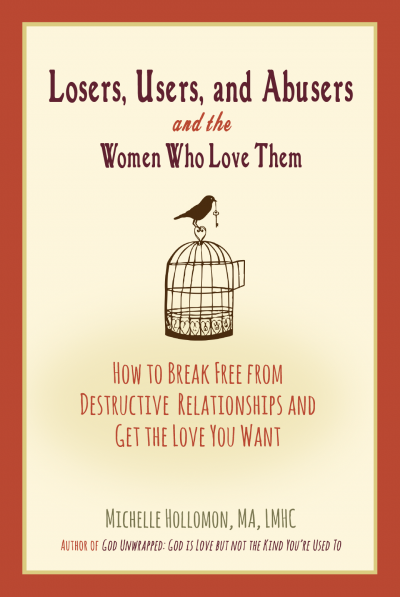The following steps are a plan to increase my safety and preparing in advance for the possibility of violence in my relationship. Although I do not have control over my partner’s violence, I do have a choice about how to respond to him/her and how to keep myself and my children safe. These steps can help me think through my options and plan my course for safety.
STEP 1: Safety During a Violent Incident. Women cannot always avoid violent incidents. In order to increase safety, battered women may use the following strategies.
A. If I decide to leave, I will _____________________________________________________. (Practice how to get out safely. What doors, windows, elevators, stairwells, or fire escapes would you use?)
B. I can keep my purse and car keys ready and put them (location) __________________________________ in order to leave quickly.
C. I can tell _____________________________ about the violence and request that she or he call the police if she or he hears suspicious noises coming from my house.
D. I can teach my children how to use the telephone to contact the police, the fire department, and 911.
E. I will use _____________________________________________ as my code with my children or my friends so they can call for help.
F. If I have to leave my home, I will go to _________________________________________. (Decide this even if you don’t think there will be a next time.)
G. I can also teach some of these strategies to some or all of my children.
H. When I expect we’re going to have an argument, I’ll try to move to a place that is low risk, such as __________________________________. (Try to avoid arguments in the bathroom, garage, kitchen, near weapons, or in rooms without access to an outside door.)
I. I will use my judgment and intuition. If the situation is very serious, I can give my partner what he/she wants to calm him/her down, before I try to leave.
STEP 2: When It’s Time to Leave. Abused women frequently leave the residence they share with their partner. Leaving must be done with a careful plan in order to increase safety. Batterers often strike back when they believe that a battered woman is leaving a relationship. The following strategies can be used:
A. I will leave money and an extra set of keys with _________________________ so I can leave quickly. I will keep copies of important documents or keys at _____________________________.
B. I will open a savings account by ____________________, to increase my independence. Other things I can do to increase my independence include: ____________________________________________________.
C. I can keep change for phone calls on me at all times. I understand that if I use my cell phone card, the following month’s phone bill may show my batterer the numbers I called. To keep my phone communications confidential, I must either use coins, a friend’s phone, or a disposable phone.
D. I will check with _________________________ and _________________________ to see who would be able to let me stay with them or lend me some money. I can leave extra clothes or money with __________________________.
E. I will review my safety plan every week or month in order to plan the safest way to leave the residence. ________________________ (domestic violence advocate or friend’s name) has agreed to help me review this plan.
F. I will rehearse my escape plan and, as appropriate, practice it with my children.
STEP 3: Safety at Home. There are many things that a woman can do to increase her safety in her own residence. Practical Safety Steps can be implemented as you go.
A. I can change the locks on my doors and windows.
B. I can replace wooden doors with steel/metal doors.
C. I can install security systems including additional locks, window bars, poles to wedge against doors, an electronic system, etc.
D. I can purchase rope ladders to be used for escape from second floor windows.
E. I can install smoke detectors and fire extinguishers for each floor of my house/apartment.
F. I can install an outside lighting system that activates when a person is close to the house.
G. I will teach my children how to call me or _________________ (name of friend, etc.) in the event that my partner takes the children.
H. I will tell the people who take care of my children which people have permission to pick up my children and that my partner is not permitted to do so. The people I will inform about pick-up permission include: ______________________ (name of school) ____________________ (name of babysitter) ______________________________ (name of teacher) _________________________________ (name of Sunday-school teacher) ___________________ (name[s] of others) ________________________________________________.
I. I can inform ________________________ (neighbor) and ________________________ (friend) that my partner no longer resides with me and that they should call the police if he is observed near my residence.
STEP 4: Order of Protection. Many batterers adhere to protection orders, but there are some who won’t. I recognize that I may need to ask the police and the courts to enforce my protective order. The following are some steps I can take to help the enforcement of my protection order:
A. I will keep my protection order _________________________ (location). Always keep it on or near your person. If you change purses, that’s the first thing that should go in the new purse.
B. I will give my protection order to police departments in the community where I work, in those communities where I visit friends or family, and in the community where I live.
C. There should be county and state registries of protection orders that all police departments can call to confirm a protection order. I can check to make sure that my order is on the registry. The telephone numbers for the county and state registries of protection orders are: _______________________ (county) and ____________________ (state).
D. I will inform my employer; my minister, rabbi, etc.; my closest friend; and __________________ that I have a protection order in effect. If my partner destroys my protection order, I can get another copy from the clerk’s office.
E. If the police do not help, I can contact an advocate or an attorney and file a complaint with the chief of the police department or the sheriff.
F. If my partner violates the protection order, I can call the police and report the violation, contact
STEP 5: Safety at Work and in Community. Each victim of Domestic Violence must decide if and when she will tell others that her partner has battered her and that she may be at continued risk. Friends, family, and co-workers can help to protect women. Each woman should carefully consider which people to invite to help secure her safety.
A. I can inform my boss, the security supervisor, and _______________________ at work.
B. I can ask ____________________________________ to help me screen my telephone calls at work.
C. When leaving work, I can ________________________________________________________.
D. If I have a problem while driving home, I can _________________________________________.
E. If I use public transit, I can ________________________________________________________.
F. I will go to different grocery stores and shopping malls to conduct my business and shop at hours that are different from those I kept when residing with my battering partner.
G. I can use a different bank and go at hours that are different from those kept when residing with my battering partner.
STEP 6: Addiction. Some people in Domestic Violent situations use alcohol or drugs in unhealthy ways. Women may be tempted to use alcohol or drugs as a means to cope, but should carefully consider the potential cost: mood altering substances can reduce a woman’s awareness and ability to act quickly to protect herself or her children from the abuser.
A. I understand the risk of neglect or violence to myself or children if I’m high or drunk. It’s far better to stay sober and alert.
B. If my partner is using, I can ________________________________________________________ and/or ________________________________________________________________________.
C. To safeguard my children I could __________________________________________________.
STEP 7: Self Care. Fleeing from an abusive relationship can be emotionally exhausting and overwhelming. In order to give myself proper care and healing, I can do some of the following:
A. If I feel down and am tempted to return to my abusive partner, I can _________________________________________________________________.
B. When I have to communicate with my partner in person or by telephone, I can ________________________________________________________.
C. I will try to use “I can … ” statements with myself and be assertive with others.
D. I can tell myself, “________________________________________________________” whenever I feel others are trying to control or abuse me.
E. I can read _________________________________ to help me feel stronger. I can call ______________________________________ for support.
F. I can attend workshops and support groups at the domestic violence program or ________________________________________ to gain support and strengthen relationships.
STEP 8: Items to take when leaving. When women leave partners, it is important to take certain items. Women can give an extra copy of papers and set of clothing to a friend just in case they have to leave quickly. Money: Even if I never worked, I can take money from jointly held savings and checking accounts. If I do not take this money, he can legally take the money and close the accounts.
Items on the following lists with asterisks by them are the most important to take with you. If there is time, the other items might be taken, or stored outside the home. These items might best be placed in one location, so that if we have to leave in a hurry, I can grab them quickly. When I leave, I should take: Identification for myself, Children’s birth certificate, My birth certificate, Social Security cards, School and vaccination records, Money, Checkbook, Credit cards, House, Office, Car Keys, Driver’s license and registration, medications, Copy of protection order, Copy of No Contact Order, Welfare identification, work permits, green cards, Passport(s), divorce papers, Medical records for all family members, Lease/rental agreement, house deed, mortgage payment book, Bank books, insurance papers, Address book, Pictures, jewelry.
Numbers to know: Police/sheriff’s department (local) – 911 or ___________________________ Police/sheriff’s department_________________________________ Prosecutor’s office _______________________________________ Battered women’s program (local) ________________, National Domestic Violence Hotline: 800-799-SAFE (7233)
County registry of protection orders _____________________________ State registry of protection orders ___________________________________
I will keep this document in a safe place and out of the reach of my abuser.
Name: _____________________________________________ Date: ____________________________
WARNING: Abusers try to control their victim’s lives. When abusers feel a loss of control – like when victims try to leave them – the abuse often gets worse. Take special care when you leave. Keep being careful even after you have left.












